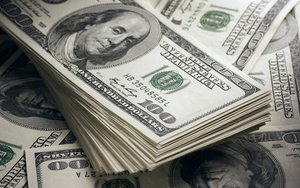 Spending on brand activation marketing in the U.S. is projected to top $595 billion in 2016, according to the Association of National Advertisers.
Spending on brand activation marketing in the U.S. is projected to top $595 billion in 2016, according to the Association of National Advertisers.
Such spending rose 5.5% in 2015 to more
than $560 billion, accounting for almost 60% of advertisers’ budgets, according to the study, which was conducted in partnership with PQ Media.
“The U.S. Brand Activation Marketing
Forecast 2016” provides the first market research to clearly define, segment, size, and analyze brand activation by platform, channel, and end-user sector. It was introduced April 19 in a
presentation by PQ Media at the 2016 ANA Brand Activation Conference.
The report also projected that activation spending will top $740 billion by 2020. It is the first study to provide a clear
definition of brand activation and to measure the size of the industry, said Bob Liodice, ANA president and CEO.
advertisement
advertisement
The report is groundbreaking in that it represents the first comprehensive
examination of this industry, Liodice says, adding that the ANA and PQ Media “are putting a stake in the ground and stating definitively that brand activation — across both B-to-C and
B-to-B — includes six platforms and 32 channels.”
The study defines “brand activation marketing” as “the convergence of media platforms and channels to shape the
way consumers experience brands by employing actionable marketer insights and strategies to bring a brand to life. What defines strong brand activation is the way they are used together, and with
traditional media, to drive results through consumer behaviors and/or actions.”
Spending on brand activation — including relationship, influencer, promotional, content,
experiential, and retailer marketing — accounted for 59.8% of overall marketing expenditures, the report revealed. At the same time, spending on traditional and digital measured advertising
represented 25.2%, and investment in trade promotions came in at 15%. The latter includes primarily brand spending in which brands work directly with retailers on promoting select products or
services.
The report predicted that brand activation spending would continue to outpace spending on advertising and trade promotions over the next four years. Automotive is the largest
category of 21 industry verticals using brand activation marketing, at $54.5 billion in 2015.
The number of media outlets has tripled in the last 40 years, with media buyers now having to
choose from over 200 options. Technology and data are affecting the media buying process with the advent of omnichannel campaigns.
Work on the report began in mid-2015 and was completed
in April of this year.
PQ Media’s proven research methodology and proprietary mapping system, PQ Medianomics, utilizes proprietary data collection techniques, algorithmic models, and
analytical approaches to track, analyze, and forecast spending, consumption, and trends in all major media, platforms, and channels of the media and entertainment industries.
Additionally, PQ
Media analysts sought input on brand activation marketing from its exclusive Global Opinion Leader Panel, which includes hundreds of executives at media and entertainment companies, financial
institutions, consulting firms, media agencies, and brands. Thousands of public and private documents from approximately 5,000 sources pertaining to brand activation marketing, the advertising and
marketing ecosystem, and other factors (such as economic growth trends that might affect brand activation marketing) were also examined.